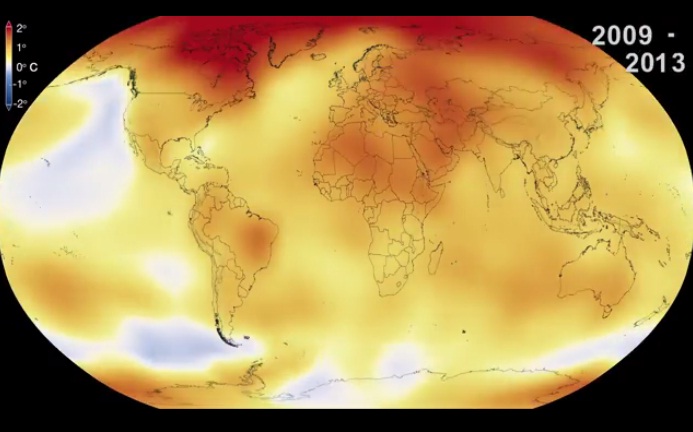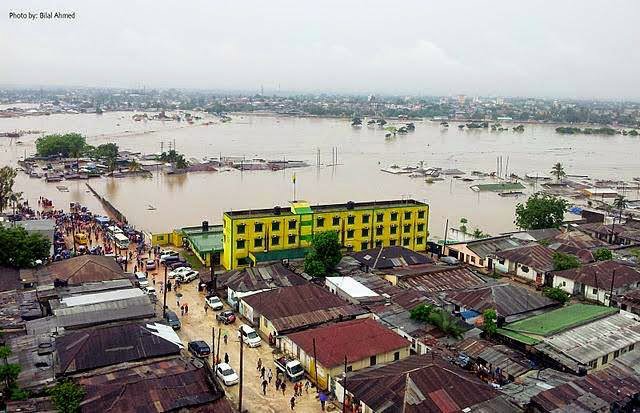By TZ Business News Staff and Agencies.
The story might sound like a flooding legend from ancient Mesopotamia–but it’s real. People were eating, drinking and making merry in Dar es Salaam, Tanzania, in May, 2015, just as it was in the days of Noah–then the floods came! And people’s properties were destroyed, public infrastructure was damaged, and people drowned.
The floods which destroyed property in Dar es Salaam during the week ending May 9, 2015 were brought by seasonal rains that started Tuesday, May 5, 2015. Pictures show this year’s floods in Dar es Salaam may have been record torrents as water levels reached marks never reached in the past. The periphery wall that surrounds Jangwani Young Africans Sports Club, for instance, was submerged.
The weather forecast for the period May 1 to May 10, 2015 indicated on paper the Tanzanian coast, which comprises of Dar es Salaam, Morogoro and Tanga regions, and the Zanzibar islands of Unguja and Pemba, would experience thunderstorms and showers over some areas.
In practice, Dar es Salaam, Tanzania’s business capital, got inundated beyond recognition in some areas as houses got swallowed, bridges broken, cars submerged and in one case a car swept by the angry torrents.
In a statement signed May 7, 2015, the Tanzania Metrological Authority (TMA) Director General, Dr Agnes Kijazi, said the rains are forecast to last for the next two weeks and asked people to take precautionary measures.
The Kiswahili name for these rains is ‘masika’ (the wet season); but this ‘masika’ has been different from others. An expert explanation for what has happened was issued by the TMA Director, who said the rains were seasonal rains, and that “this is due to the deepening of the low pressure system in the Indian Ocean off the Somalia coast which drags moisture rich south easterly winds from the Ocean.”
The Director said a period of heavy rains exceeding 50 mm was expected in the coastal regions and areas of Tanga, Coast, Dar es Salaam, Lindi and Mtwara as well as Pemba and Unguja Islands, and that her agency would continue monitoring the situation and issue updates when necessary. She called upon people, particularly sea users to take precautionary measures.
Also read an earlier weather related story published here.

The world map in which Tanzania falls in the area where the year 2014 was 1 degree Celsius hotter above normal
At the time of writing this post, a warm Saturday afternoon of May 9, 2015, the ‘masika’ are expected to continue. TMA has said the rains will decrease gradually but they can be expected to fall until May 20, 2015. People who live in valleys are strongly advised to take precautionary measures—which should include identifying somewhere else to live.
The Chinese news agency Xinhua chronicled the Dar es Salaam floods: At least three people were killed, thousands were displaced and transport was paralyzed in Tanzania’s commercial capital Dar es Salaam following heavy rains that started on Tuesday, May 5, 2015.
Said Meck Sadick, the Dar es Salaam regional commissioner, confirmed the deaths of the three residents, saying they died after being swept away with flash floods.
“Among those killed by the flash floods are two children and an old man,” the Dar es Salaam Regional Commissioner Said Meck Sadick said, adding that authorities were assessing to establish the actual damage but initial reports confirmed that more than 38 houses in Kigamboni ward have been totally submerged.
The heavy rains which were accompanied by lightning strikes and strong winds also brought businesses to a standstill as people failed to reach their places of work and businesses.
Transport was paralyzed as cars were forced to spend many hours in the traffic jam, but police were on call to ease the mess. The rains led to the temporary closure of the Jangwani road stretch along the busiest Morogoro Road after water started to run above the main Jangwani Bridge.
The police and fire brigade worked round the clock at the Jangwani road stretch helping people who were trapped in flash floods as some of them were seen sitting on the rooftops of their houses.
The Government owned Daily news said, a man identified as Shabani Iddi (73), a resident of Manzese in Kinondoni Municipality in Dar es Salaam, has died following the ongoing rains in the city.
Dar es Salaam Special Zone Commissioner of Police (CP), Mr Suleiman Kova, told this newspaper that the body of the deceased was found floating on River Ng’ombe in the municipality on Thursday morning, May 7, 2015. According to Kova, the deceased was trying to cross the river before the raging waters swept him away, leaving the body stuck in a wooded area within the river.
The zonal police chief called on city residents to be careful while on their daily activities during the rainy season. He advised people to avoid passing along areas with plenty of water to rid themselves of the danger of sinking and drowning. He said it was advisable to return home early because of the rains which have worsened the transport problem by rendering a number of roads impassable.
The ‘Daily News’ established that besides Jangwani, other areas that were severely affected include Kigogo, Msimbazi, Buguruni, Ilala, Tandika and Kiwalani. There were heavy traffic jams that made movement within and outside the city almost impossible. Vehicles on Morogoro, Kawawa and Nyerere roads as well as Samora Avenue and Sokoine Drive in the city centre came to a standstill for most of the time.




